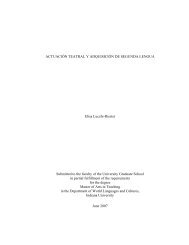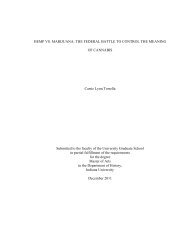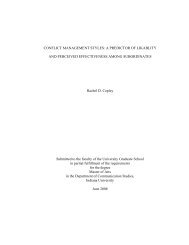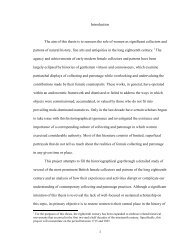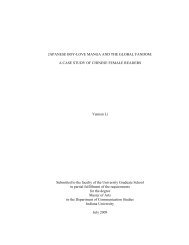Amir Saad Thesis final revision 03x - IUPUI
Amir Saad Thesis final revision 03x - IUPUI
Amir Saad Thesis final revision 03x - IUPUI
You also want an ePaper? Increase the reach of your titles
YUMPU automatically turns print PDFs into web optimized ePapers that Google loves.
12<br />
cores. When nonvital teeth were restored with cast post and cores in resorbed bone (5<br />
mm below the cementoenamel junction), there was no significant difference in<br />
fracture resistance between cast post and core restorations versus glass fiber posts<br />
with composite resin core build-up. It was found that increasing the post width does<br />
not increase post retention significantly. 63, 85 Longer posts demonstrated more<br />
retention than shorter ones. 63 It was also found that short posts transmit greater lateral<br />
forces to the remaining root structure compared with longer posts. 86<br />
Fiber posts have an elastic modulus (E = 20 GPa) similar to that of dentin (18<br />
GPa) when compared with cast and prefabricated metallic posts (E = 200 GPa). Thus,<br />
stresses along the remaining tooth structure are distributed instead of concentrated, 7,<br />
87-92 which would explain the lack of significant root fractures. 7 FiberFill (Pentron,<br />
Wallingford, CT) (Glass fiber obturator- post with gutta percha tip) demonstrated<br />
significantly higher fracture resistance values compared with conventional cast post<br />
and core, FiberKor (glass fiber post), and metal prefabricated posts. 93 Prefabricated<br />
metal posts and cast post and cores have been used for a long time and are still being<br />
used as the standard treatment. It is found they increase the risks of root fractures. 6<br />
Although fiber posts are found to be affected by moisture, modulus or elasticity and<br />
flexural strength levels exceeded the strength necessary to avoid fracture of the post<br />
during function. 6<br />
In a survey made in the late 1980s, it was estimated that around 25 percent of<br />
all prosthetically restored teeth are nonvital and endodontically treated before<br />
prosthetic restoration. 94 Questionnaire surveys of dentists in the US, Sweden,<br />
Germany, and Switzerland have shown disagreements about prosthetic treatment of<br />
endodontically treated teeth. Surveys included but were not limited to current



